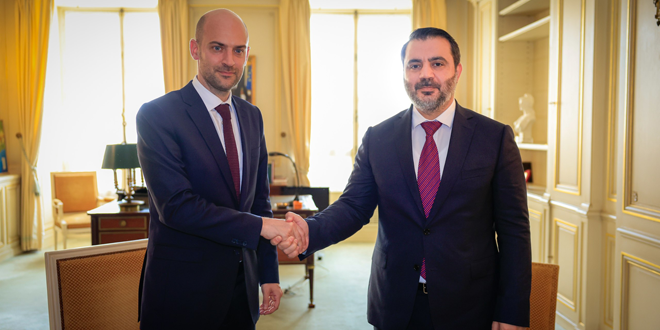Syrian Foreign Minister Assaad al-Shibani held a series of high-level diplomatic meetings this week on the sidelines of the Oslo Peace Forum, underscoring the transitional government’s efforts to consolidate international legitimacy, advance bilateral cooperation, and reinforce Syria’s reintegration into the global diplomatic arena.
Meeting with Norwegian Counterpart: Reaffirming Bilateral Ties
In the Norwegian capital, Shibani met with his Norwegian counterpart Espen Barth Eide to discuss bilateral relations and shared regional concerns. the talks focused on developing Syrian-Norwegian cooperation and exploring avenues of collaboration in areas of mutual interest. The meeting signals a growing European openness to engage with the new Syrian leadership following the fall of the Assad regime in December 2024.
Norway’s role as both a peace facilitator and humanitarian actor was reportedly central to the discussion, with emphasis placed on Syria’s political transition, refugee return frameworks, and the importance of upholding international law in post-conflict reconstruction.
Strategic Dialogue with France: Political Transition and Security Priorities
Shibani also held a pivotal meeting with French Foreign Minister Jean-Noël Barrot on the margins of the United Nations Ocean Conference in Nice. Their talks covered strategic topics ranging from the political transition process to national security and economic recovery.
The two ministers discussed Syria’s ongoing negotiations with the Syrian Democratic Forces (SDF) to integrate their administrative and security apparatus into the state’s formal institutions. The French side commended the pace and structure of the political process and praised Syria’s commitment to multilateralism, particularly its cooperation with UN mechanisms.
The Syrian minister, for his part, expressed gratitude for France’s support in lifting sanctions and reopening investment channels, especially in the energy and infrastructure sectors. Shibani also highlighted France’s constructive role in sensitive matters such as chemical weapons disposal, a legacy issue inherited from the Assad era.
The ministers agreed to maintain close diplomatic contact, with Barrot extending an invitation for Shibani to visit New York later this year to continue discussions, including Syria’s position on the Israeli–Palestinian question and the broader two-state solution framework.
Egyptian-Syrian Coordination: Shared Regional Vision
On the sidelines of the Oslo Forum, Shibani also met with Egyptian Foreign Minister Badr Abdel Aaty. The meeting reaffirmed the longstanding ties between Damascus and Cairo and focused on strengthening bilateral coordination to address regional challenges.
Both ministers emphasized the importance of maintaining regular consultation and working together to overcome political and economic obstacles. They reiterated their shared commitment to fostering stability in the region and advancing comprehensive development initiatives.
A Return to Diplomacy and Global Engagement
These diplomatic engagements reflect a broader shift in Syria’s foreign policy under the transitional government led by President Ahmad al-Sharaa. Unlike the confrontational and isolationist posture of the previous regime, the new administration appears committed to rebuilding trust, normalizing relations, and seeking constructive partnerships abroad.
Shibani’s presence at the Oslo Peace Forum, alongside key Arab and international diplomats, marks a significant step in Syria’s re-entry into the global diplomatic fold. It also serves as a platform to reassert the transitional government’s legitimacy and commitment to reform, accountability, and regional integration.
As Syria navigates its post-conflict recovery, the Foreign Ministry’s active diplomacy may prove crucial in unlocking international support, coordinating reconstruction efforts, and ensuring that peace is not only declared—but sustained.
This article was translated and edited by The Syrian Observer. The Syrian Observer has not verified the content of this story. Responsibility for the information and views set out in this article lies entirely with the author.


